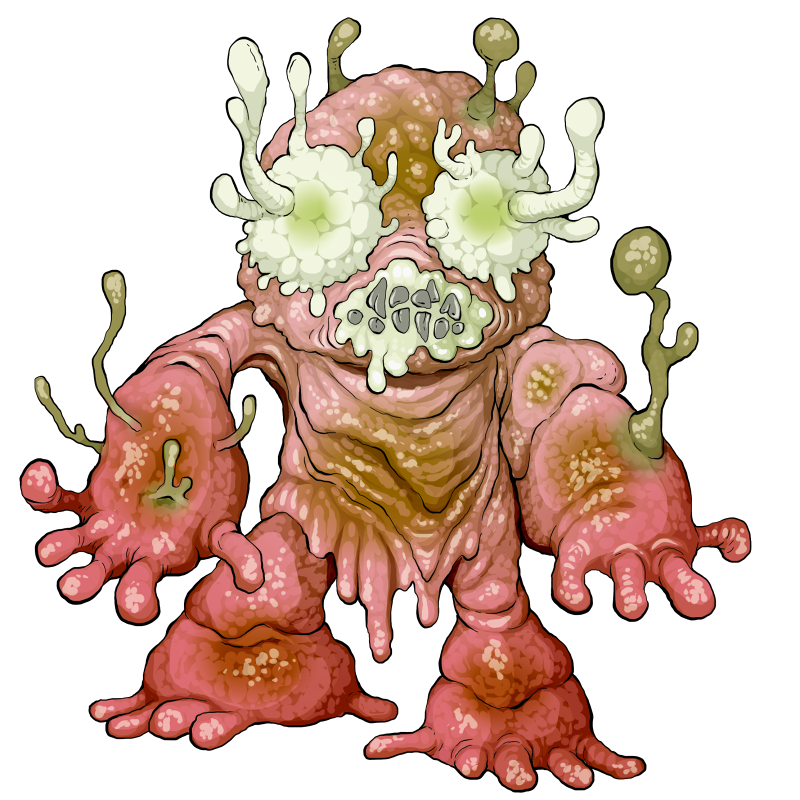|
PUFFERMILDA  CONCEPT BY VANYA REITER CLASS: BOTANICAL BIOLOGY: this highly specialized fungoid has no locomotive anatomy of its own, growing as an unseen internal parasite in other common monsters, particularly bioconstructs and most commonly the Gromory, the first monster it is known to have adapted to. Eventually filling much of the host's interior, its pale fungal mycelium begins to erupt from the host's orifices by the time it has matured, and stalked, globular fruiting bodies may develop from the host's skin surface, which the organism can rupture to scatter clouds of spores. Newly contaminated hosts are momentarily paralyzed within seconds, and the fungus can begin to exert its mental domination immediately. When infection fully takes hold, the Puffermilda floods the host with biochemical stimulation, the growth process increasingly pleasant and calming to most organisms. It openly communicates with the host's thoughts throughout, and the final stages are an equal merging of the two minds. BEHAVIOR: the Puffermilda is an ethical and courteous parasite. It will freely exert control over another monster for matters of self-preservation or the protection of others, but will only develop further in a sapient body with its total permission, and will even revert back to hibernating spores if the host desires indefinite privacy. It may, however, resume germination if the host's brain functions are for any reason terminated, believing that a usable body should never go to waste. APPLIANCE: The Puffermilda combines the versatility of spontaneous parasitic mind control with the attributes of its original host at the cost of only agility and vision, compensating for the latter with its own fine-tuned senses. Associates consenting to limited unobtrusive infection can even use the fungus to relay messages to other mutual hosts as reliably as any other mechanism of neurocommunication. SPORE CLOUD: the Puffermilda can release a cloud of spores that can momentarily incapacitate other creatures, and the fungoid can subsequently exert a degree of control over the infected host. Contents copyright Jonathan Wojcik
|